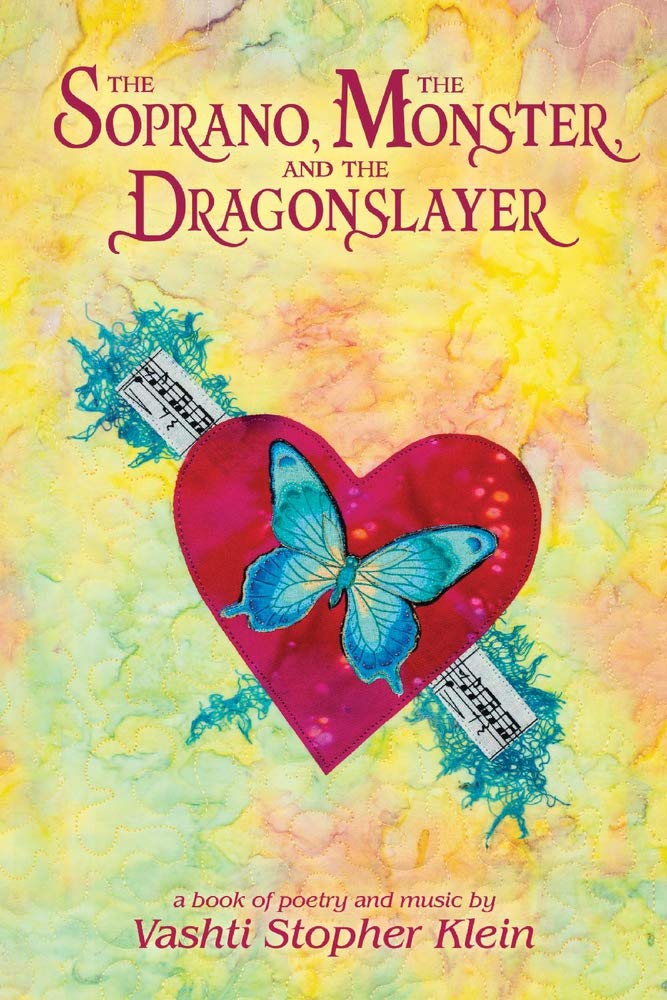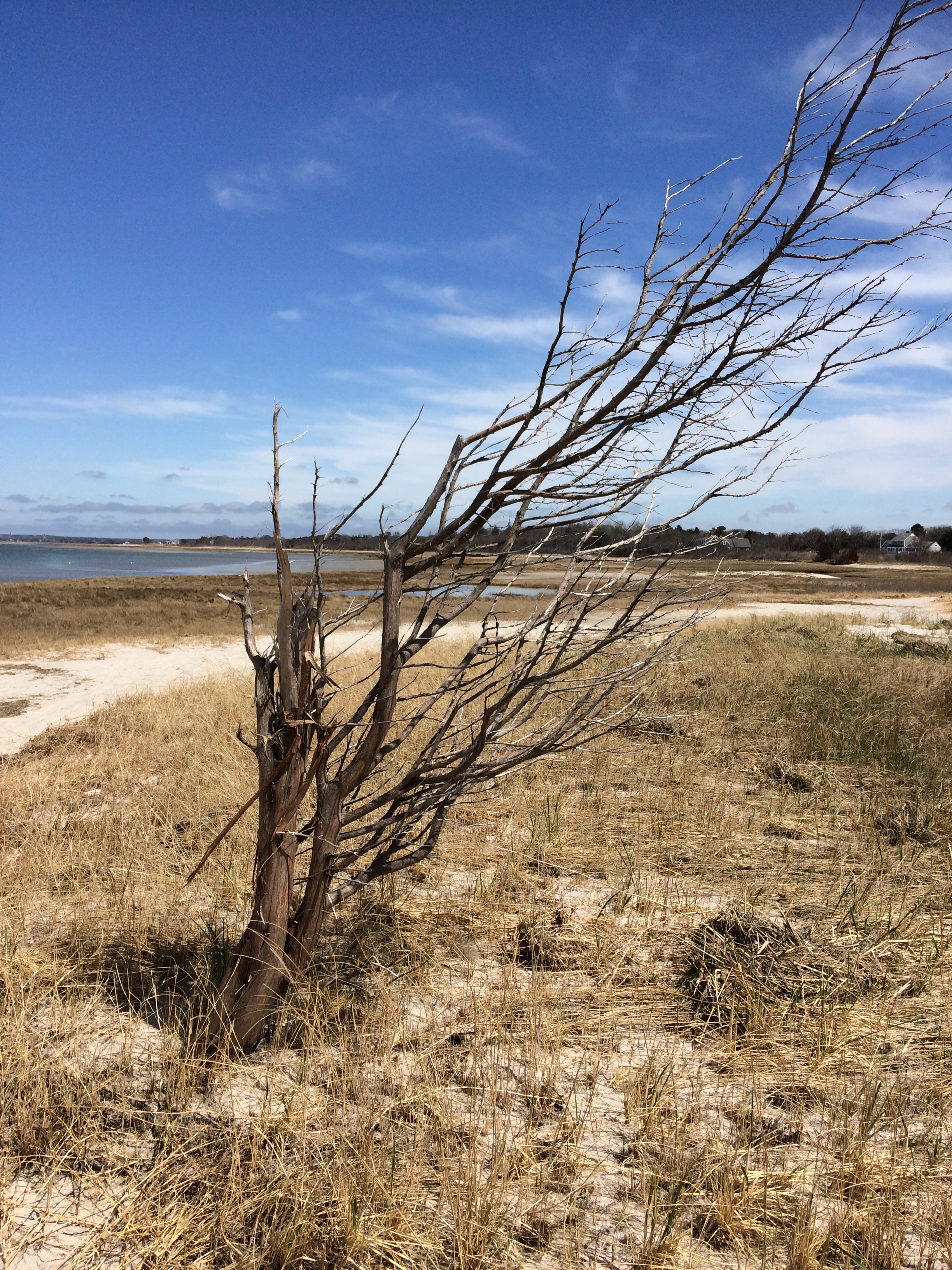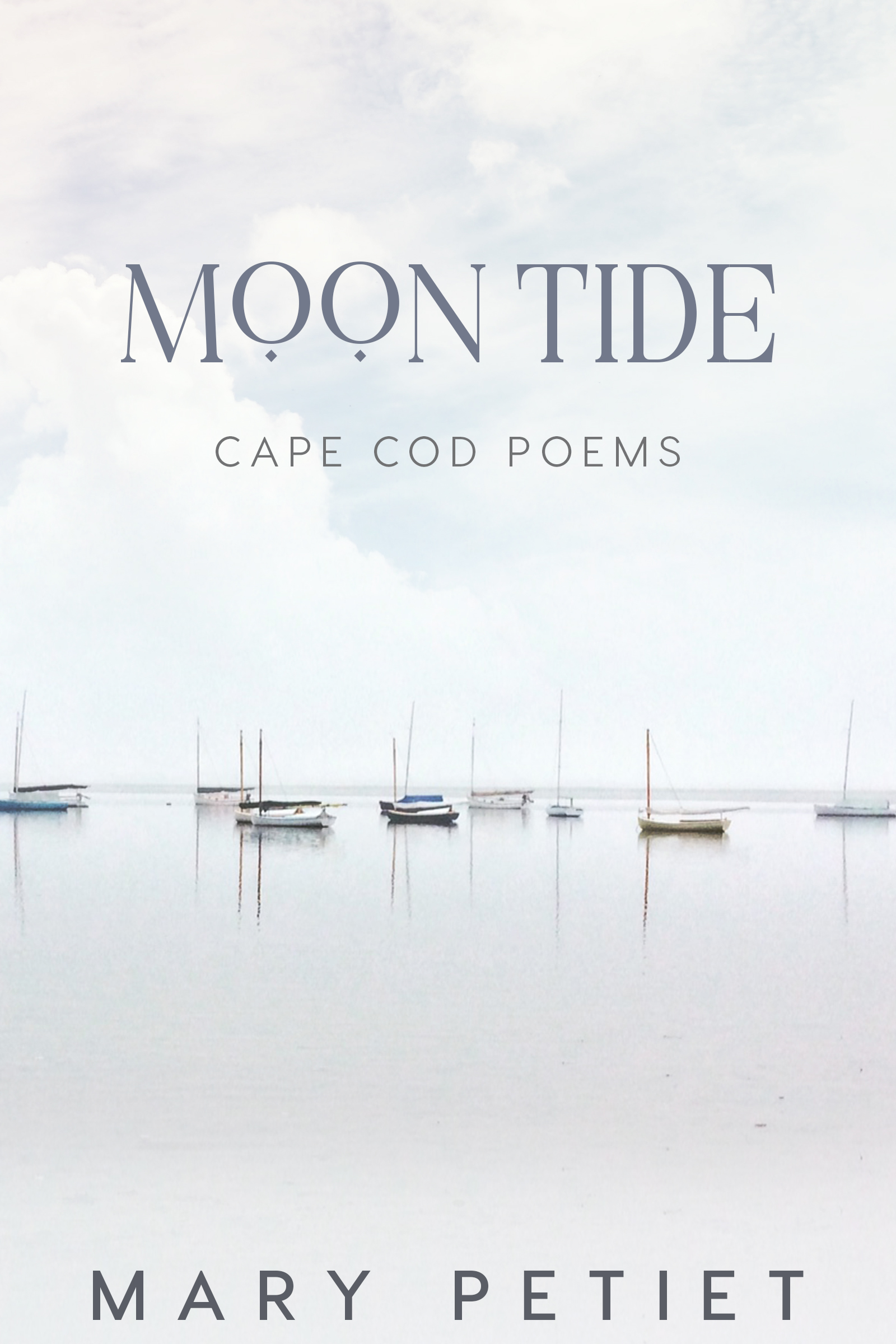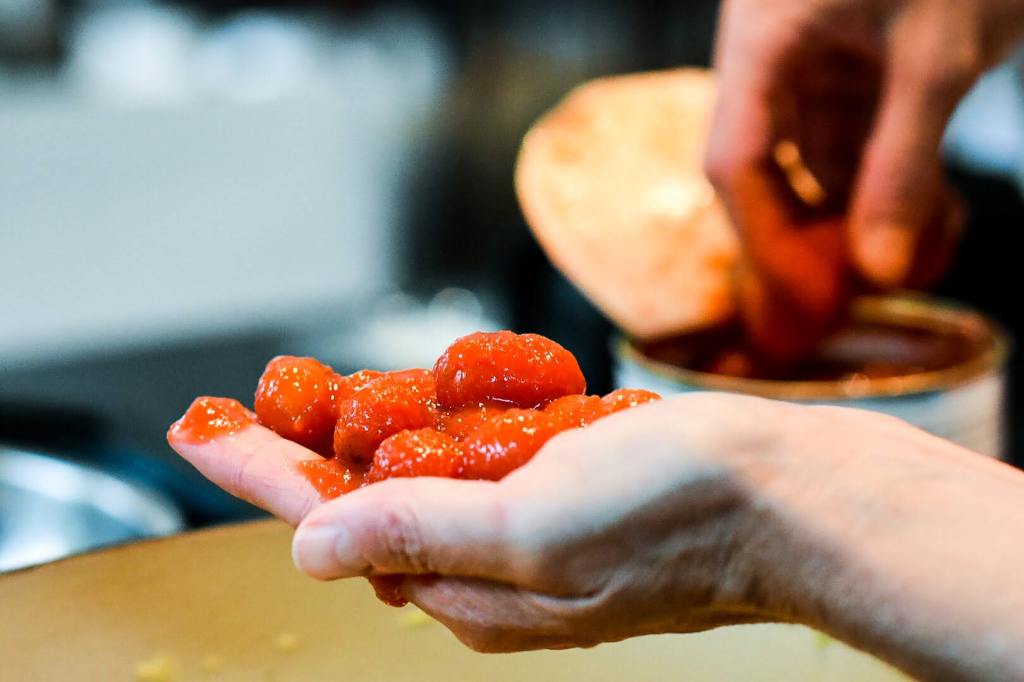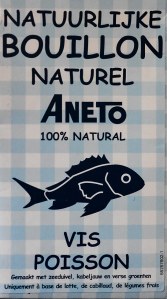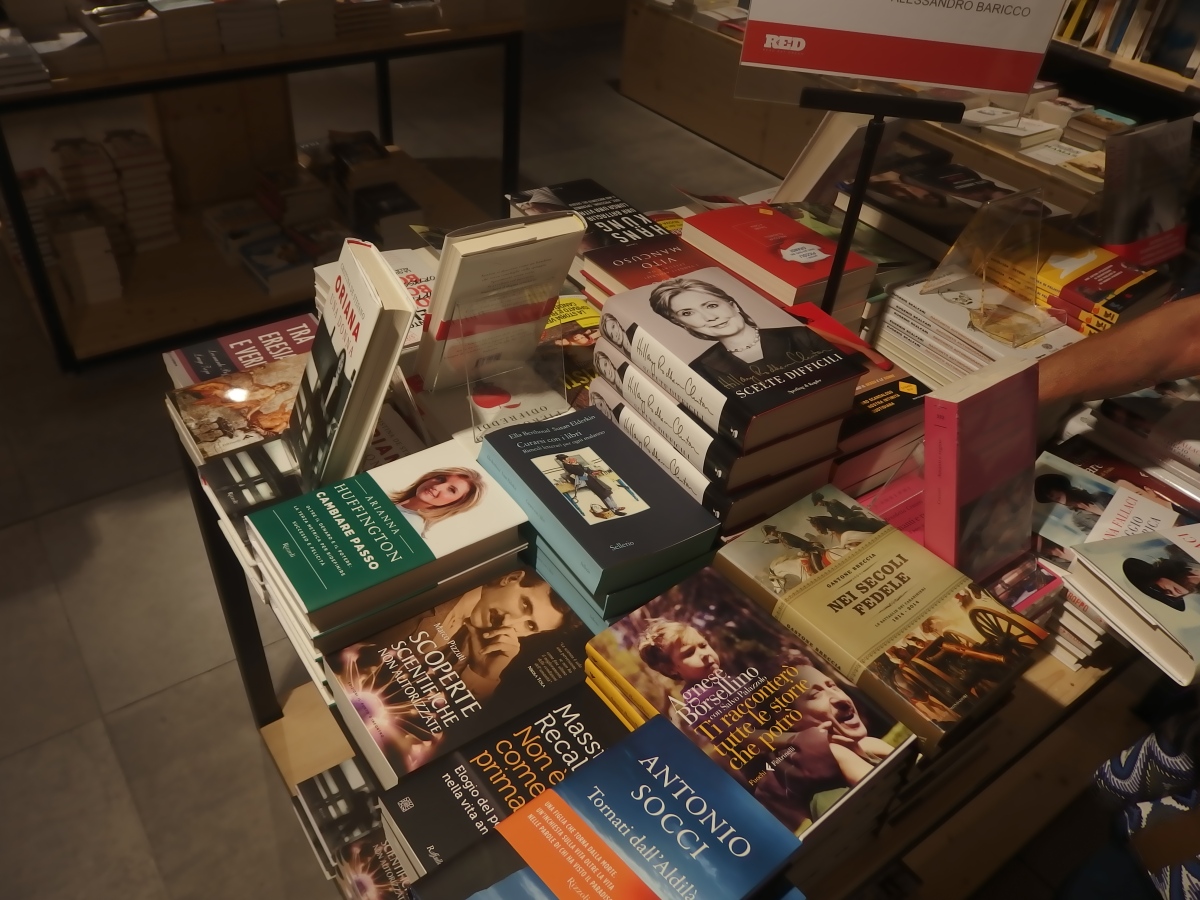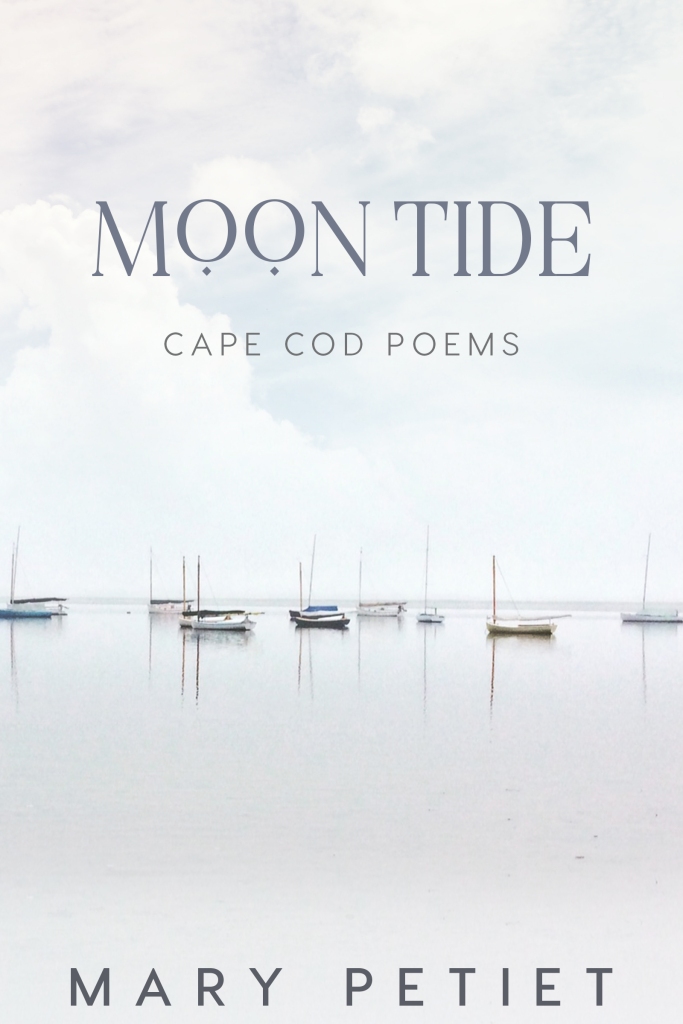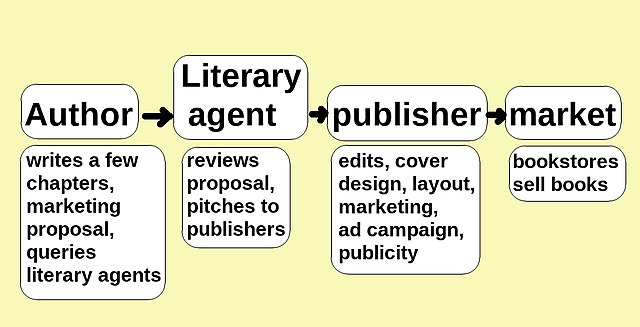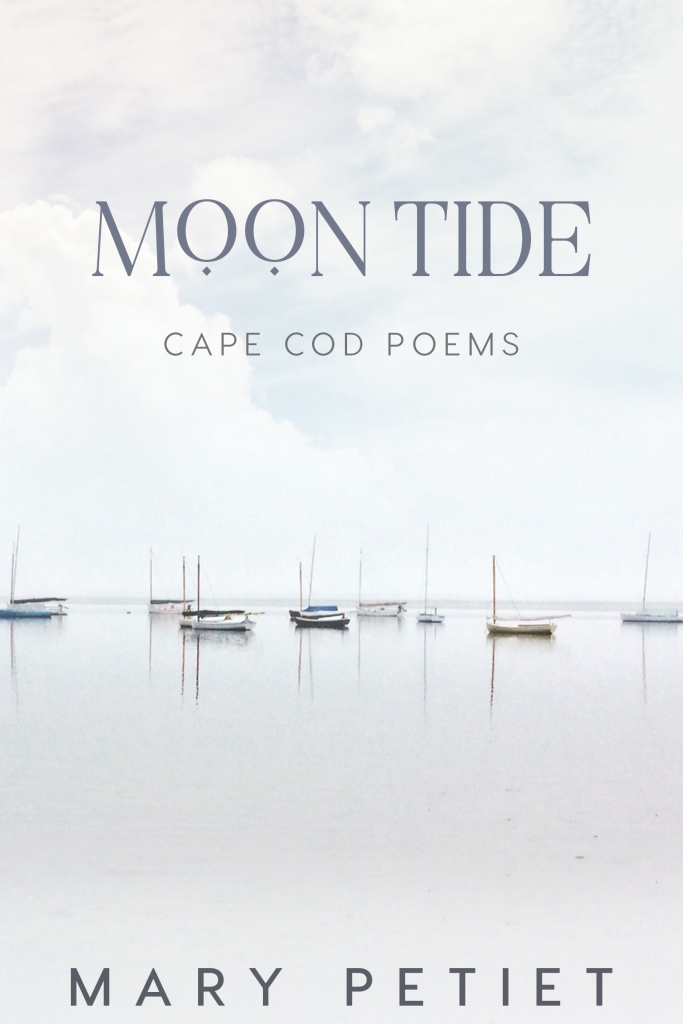Vashti Stopher Klein is an award-winning filmmaker, folksinger, and songwriter in the Washington D.C. area. She is the author of the multi-media poetry collection The Soprano, the Monster, and the Dragonslayer. Her films have won awards, including CINE Golden Eagle; Gold, Houston International Film/Video Festival; Blue Ribbon, American Film/Video Festival; Best Director, International Monitor Awards; Silver Hugo, Chicago International Film/Video Festival. Inspired to produce artistic products with positive rippling effects throughout the world, she formed Butterfly Effect Productions, Inc. In 2014, she released her first album, The Heart of Things. The following year, her album, Path to the Sun, Moon and Stars was born.
What would you decide to do if fighting a battle to save your life threatened the very essence of your life? Written as a fairytale, with enchanting artistic elements, the Soprano, the Monster, and the Dragonslayer will have readers rooting for the Soprano’s success, worrying over the outcome of her battles, and cheering for her triumph. Her voice is then heard in poetry and music.
Vashti Stopher Klein
A warm welcome to film producer, poet, and singer Vashti Stopher Klein who is joining the blog to talk about her unique book The Soprano, the Monster, and the Dragon Slayer. Klein’s origins from a long line of musicians combine with her experience in the visual arts to shine through her book, which fuses three genres: poetry, music, and visual arts. The result is an inspiring, multi-faceted volume bound together by the theme of love.
Truly do give me
the light in the trees
the sun on the mountain
the river at our feet
the wind in our hair
the joy that surrounds us
of all that we love.
from the poem Love in the Daylight Hours
Poetry and song are close cousins. Have you ever wondered when reading poetry what it might sound like? The Kindle version of Klein’s book has an answer with links to the author singing her poems. Klein sings well with a good range and is able to merge the written with the vocal beautifully. Hearing her soaring voice brings the words to life as the author becomes the Soprano.
The book is illustrated beautifully by Carol Collett, of Carol Collett Desert Studio, whose mixed media quilted images decorate the text with truly unique Americana.
Klein’s goal is to produce art that ripples out into the world with good, and she achieves that beautifully with this collection.
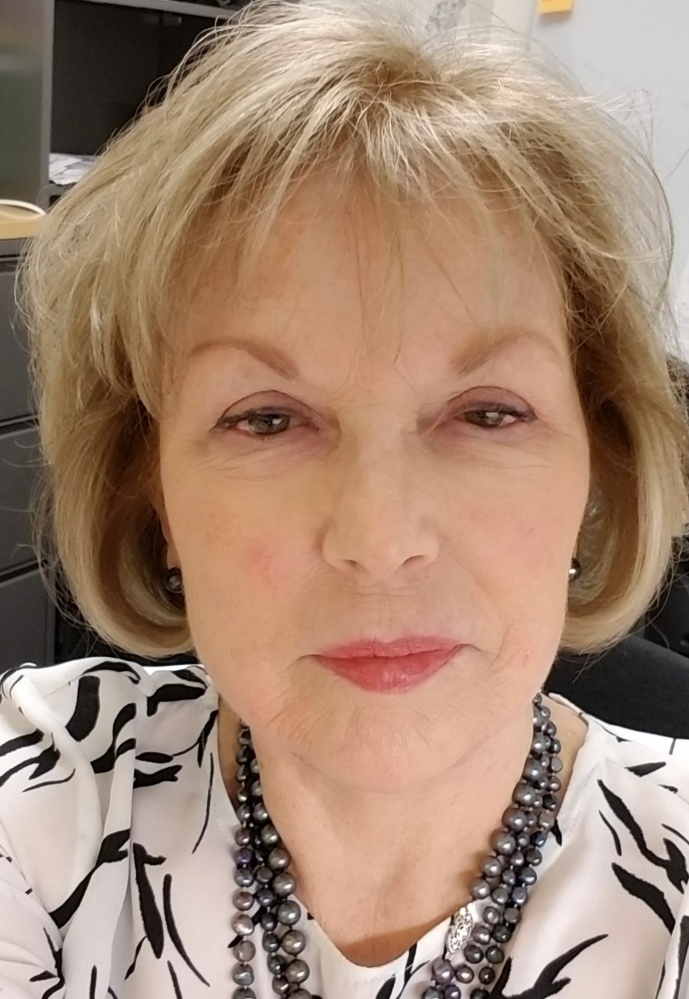
1. I’M INTERESTED IN THE BACKSTORY. YOUR POEMS READ AS A STORY OF HEALING. HOW DID YOUR EXPERIENCE LEAD TO YOU WRITING THE SOPRANO, THE MONSTER, AND THE DRAGON SLAYER?
All of us who’ve lived through this past year have watched our health care professionals on the front lines, like warriors, selflessly take care of people, while risking their own lives to do so. We have seen what compassionate care means, like never before. When you are the recipient of that kind of care from other human beings in your darkest hour, from people you don’t know, it changes your life forever.
The backstory of my book began in the winter of 2012 when I contracted a deadly virus that resulted in a cough that became so severe, I cracked a rib. A subsequent CT scan showed a mediastinal mass in my thymus gland.
My doctor referred me, reluctant and terrified, to a cardiothoracic surgeon who said he wouldn’t know whether it was cancer or not until he performed a surgical resection. Robotics were possible to use but he would convert to a sternotomy if that proved unsuccessful. His words made me feel like I was in a nightmare.
He said if it was cancer, he would remove anything it touched, including my voice box because his job was to save my life. Radiation treatments would follow. If the laryngeal nerves were damaged, another risk, it could affect my voice forever, leaving me hoarse or unable to speak. This mediastinal mass was an anomaly, unknown to me, that I’d had my entire life, so I asked the surgeon why I should risk surgery now. He said it was the only way to find out if it was cancer, and, it may be growing. I asked a million questions, and he answered every one. I was numb.
I weakly whispered something about being a singer; the surgeon said he operated on a tenor recently who only sang Puccini and he had successfully performed this and similar surgeries hundreds of times. These things happen to other people and right then, I was not feeling like I would be one of the lucky ones.
I was terrified I would never sing again. All I could think of was if I can’t sing, or speak, what value will my life have?
I told him I didn’t want the surgery. He said to think about it for a couple of weeks and we would talk again. Drawing up my courage, I heard myself assert, more loudly than before, that I was a singer, and it was “important to my life, to be able to sing.” I had never said that out loud before, as a definition of my life’s value. I asked if I could play a recording of one of my songs for him. I thought that if I played it for him, perhaps he would be more careful. He looked a little surprised but said yes.
I played an operatic piece I was learning, En Aranjuez con Tu Amor by Joaquin Rodrigo and my voice filled the exam room. He listened intently. When the recording stopped, he kindly said, he would do everything he could “to save that beautiful voice.” He answered the multitude of questions I had which earned my trust. A second-opinion doctor concurred with his diagnosis and proposed treatment but was so arrogant and dismissive I didn’t think he heard any of my concerns. I returned to the first surgeon.
From that point forward until the surgery, I reflected on my life and everything I had ever valued. As a filmmaker, I prided myself on being able to control complicated productions that had massive moving parts every day. Now I had no control at all. I began to imagine the world going on without me. In the weeks before surgery, I was learning to let go.
The night before surgery I had a dream. It was simple. My surgeon’s smiling face appeared, and he said, “Everything is going to be just fine.”
The next morning in the hospital’s pre-op room, I was strangely calm. The anesthesiologist briskly entered and asked about dry eyes and latex allergies, after which there was a small prick to my arm. Six hours later I woke up in the recovery room with a tight bandage around my chest. In between sleep and awakening, there was only a sheer black void, the absolute perfection of nothingness. I didn’t want to know if I’d had a sternotomy at that moment. But I had.
In my post-op appointments with my surgeon, I could not have been more fragile, inching my way down long hospital hallways to get to the surgical suite. He said I was recovering beautifully. I knew that I could trust him, and his words meant I was finally on the other side of the precipice where there was no more fear. Just recovery. And life. But I was still hoarse from the breathing tube.
From the first day after surgery, my body felt like the weight of the world had lifted from my chest. My sense of touch, taste and smell were strangely heightened, tenfold. When my fingers touched my skin, it was as though it was the first time I had ever been touched. Meals were so delicious and enjoyable I chewed and chewed to prolong the wonderful tastes. Smells were more acute.
Sometimes late at night as the pain medicine wore off, and my thoughts slowly assembled, I began to experience the profound depth of what had happened to me. I was captivated by Andrea Bocelli singing Vaghissima Sembianza, “a cherished vision,” a song about a painting that was a replica of a long-lost love’s image. Over and over, in a dreamlike trance, I played the song with this precious vision. It brought me such comfort. I didn’t know why.
As the days passed, I couldn’t believe the kindness I received from so many people throughout my ordeal. The nurse who removed my chest tube; the man at the hospital’s front desk who leaped up to take my arm as I unsteadily walked in for a post-op appointment; the anesthesiologist, with a worried look, who checked on me in the ICU. The hospital caregivers and surgeon’s staff were completely selfless. None could know the profound effect they had on my life simply by being supportive.
As my recovery progressed, and anesthesia drugs wore off, conversations gradually drifted back into my consciousness, and late one night, I remembered my surgeon saying the mediastinal mass had begun to attach itself to my lung, and the pericardium of my heart. I then realized the monster within had been spreading and positioning itself to make its final move. It could have attacked me at any age; but for some reason, it had chosen this time of my life. A time when I was too young to be old, and too old to be young.
In the flickering light of my television that night, in the wee hours before dawn, in a medicated haze, I suddenly realized that this brilliant surgeon, whom I had entrusted with my life, had reached the monster just before it wrapped itself around my heart and lungs forever. And I knew in these twilight hours of excruciating profundity, this story would affect me the rest of my life.
As healing began, I started to sing a little each day, starting tentatively at first. After a few weeks, it began to feel like my voice had no limits. The high notes were unforced without the obstruction of the mass near my lungs. I felt a part of everything that was alive because my voice was nearly lost forever.
My life changed. The kindness of these selfless medical professionals rekindled my connection to others and to nature which I was drawn to each day, simply because there were remarkable people who cared about someone who to them was a stranger. I knew I could never go back to my previous life; I had to move forward. It was as if I’d been under a spell. These kind people slayed the monster of my life’s faded expectations. The surgeon stood by me, listened to my fears, and gave me the unvarnished truth. He spoke to me with consideration and respect. It was not only his brilliant surgical skill that healed me; it was his honesty and compassion during my darkest hour and his and others’ innate goodness as human beings that saved my life.
I didn’t want to squander the precious time they gave back to me. My heart was open wide, and it led me back to the music of my life.
As I recovered and began to sing and write poetry again, I felt my life change as I healed. I practiced until I built up enough courage to perform one night at a local open mic. I was so nervous; I had no idea what to expect. I sang Raglan Road and when I finished the audience stood and applauded wildly. I was overwhelmed.
I then began to sing and perform more locally, and the audience reactions moved me. Sometimes they stood and applauded; other times shouted “Wow! Just wow!” Some walked on stage with me and hugged me as their tears fell; others told me that listening to my music had a trance-like effect on them that soothed them and helped them to relax.
During this journey, I came across a paper by Edward Lorenz whose theory famously became known as “the butterfly effect.” One small action, a butterfly flapping its wings in Kansas, can have reverberating effects throughout the world, and cause a tornado in Japan. I began to feel that my singing, like the rippling effects of Lorenz’s butterflies, might be something positive I could contribute. I began to feel that everything affects who you are, and who you are affects everything.
I formed Butterfly Effect Productions Inc. to produce artistic products whose rippling effects could be a source of comfort and beauty. Because I didn’t know what the future held, I wanted to capture my music, so I decided to record my first album, The Heart of Things, released in 2014. The artwork of the woman on the cliff, with arms wide open, and heart energy flowing, was an image of how I felt as I healed.
The next year, in a flurry of inspiration, I composed numerous songs and poetry. They came to me as I walked each day in the park, they appeared in my dreams or as I walked into a room. As the music came, I decided to record a second album that became Path to the Sun, Moon, and Stars, released in 2017.
I was tested regularly to make sure the monster didn’t return. They said it was unlikely. But I felt I had been given a second chance to leave something of whoever I was in the world, and I wasn’t going to waste it. My music, my singing, my poetry, the films I made, the songs and stories I wrote, would be my contribution.
2. THE SOPRANO, THE MONSTER, AND THE DRAGON SLAYER STANDS OUT AS IT INCORPORATES THREE GENRES: POETRY, MUSIC, AND THE VISUAL ARTS. WAS THIS INTENTIONAL, OR DID IT EVOLVE? HOW HAS IT INFLUENCED YOUR EXPRESSION AND ABILITY TO CONNECT TO AN AUDIENCE?
The book evolved from the songs, poetry, and films I’ve been writing since I can remember. I find artistic expression to be such a fluid process that it has a life of its own. For me, the inspiration selects the genre; it’s as if it comes from somewhere else and demands to be expressed. Sometimes it wants to be a poem; sometimes it must be a film; other times, music; sometimes the lyrics come first, other times, it’s the melody. When it happens, it’s as if I must sit down right then and write it down, or sing it and record it, or play it on the piano until it is roughed out. I can’t rest until this is done. I once wrote a poem called “The Late Great Roscoe Mac,” when a friend told me that in medical school they practiced on a cadaver they named Roscoe Mac. That night as I ate my dinner, it was as if Roscoe was next to me saying, “Write this down. Write this down, now!” I had to stop eating and write the poem. Every line was very nearly perfect from beginning to end after one draft.
One of my songs called “Whatever He Wants,” started as a tune in my head. It had a certain levity to it but also had a helpless feeling. I had no idea what it was about, but the melody kept coming back to me. One morning, after a recording session, the previous day, I woke up out of a dead sleep thinking, “Whatever He Wants! Oh, that’s what it’s about!” Then, as I sat up in bed, I wrote the lyrics on my phone. The song changed very little after that.
This process has gone on for years, off and on; but I had lost touch with that part of myself before my surgery. Afterward, I felt I needed to do as much as I could as soon as I could because I was keenly aware that we only have today to share who we are.
In 2019, I decided I wanted to capture some of the work I’d already created in a book. I thought it should have a specific theme, so I chose love poems I had written over the years. With newfound confidence, I now dared to put it out in the world. I reached out to my lifelong friend, Carol Collett, and asked if she would share her lifetime of amazing artwork for the book; some pieces she had created over the years; others she created especially for the song or poem as needed. It was a joy to collaborate with someone dear to me with whom I felt such a kinship. And it was exciting to think our artwork would be shared in one book.
In terms of the visual media used, as a filmmaker, I’m familiar with the power of sound over images. And since music lyrics are simply poems, I decided I would add my music lyrics to the poetry in the book and link them to my published songs to enhance people’s experience. I imagined someone putting on their earphones, taking my little book of poetry to a coffee shop, looking at Carol’s exquisite artwork, and reading my poetry in an e-reader and listening to my music as they remembered what it was like to be in love.
I think people are connecting to my music and poetry because they feel a kinship in terms of their own life experiences. It seems to soothe them. Steel Drums and Ode to Harley have received such heartfelt responses of joy from people who found comfort in the promise of the future in Steel Drums, to tenderness and empathy from those who treasure their “best friends…” in Ode to Harley.
I hope that my songs, poetry, short stories, and films will always have positive effects that are meaningful, that move people, and that help heals their hearts, even for just a moment.
3. WHAT ARE YOUR FUTURE PLANS?
There is so much I have yet to do. I have pieces of music waiting to be completed; and finished songs waiting to be recorded. I have poetry to collect in another volume; short stories for a book; one is about my mother called, “Sun Mother, Dream God.” Another is a rough draft I’ve written of a book of dreams I want to finish called “The Winnekawe Bear Book of Dreams.” I have a rough cut of a short film to finish producing called “The Trouble with Venetians.” The pandemic stole a year from all of us; for me, I went inward. But now that we are starting to get some semblance of our lives, back, I feel myself opening up, going from survival mode to one of gratitude for my life again. This feeling inspires me to consciously make time to do what is most important: create art with positive rippling effects that will live long after I am gone.

